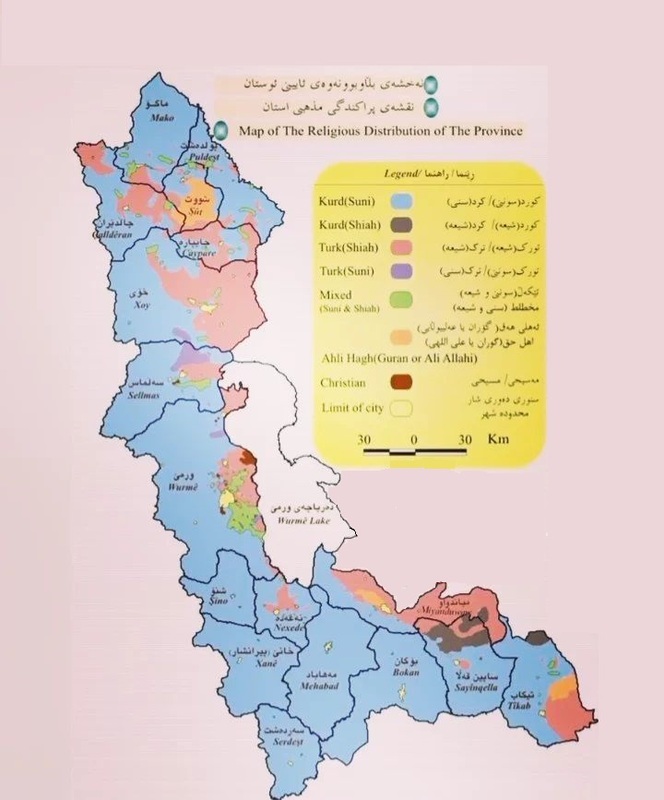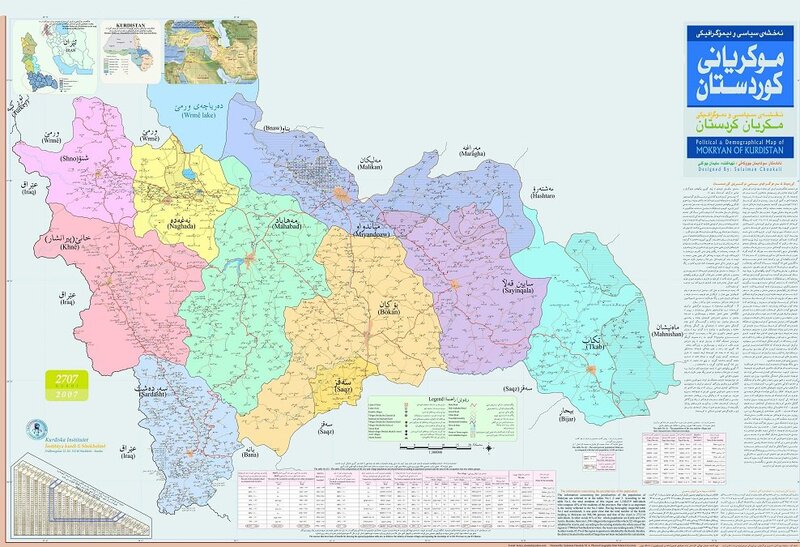Read the first part of this article here
The province of Mukriyan, as mentioned earlier, refers to the areas under the rule of the Mukri tribe. The Mukri tribe used to consist of several tribes, the most important of which is the Mukri tribe. The tribe was one of the tribes of the Baban region of Sharazur. According to the information provided by Sharafkhan Badlisi, during the Mongol period and the Turkmen period of Aqoyinlo and Karaqoyinlo, no border between Sharazur and Baban prevented the movement or desertification of the tribes. Therefore, these tribes were on the move in those areas. But from the plains below Urmia Lake the Kurds lived that were under pressure and violence from the Mongols. At that time, Sardasht was of special importance. The tribes living in Sardasht easily had summer and winter houses and went to Baban without fear and obstacles. One of these tribes was the famous Mukri large tribe.
According to the Sharafnama, the Mukri tribes held a lot of power during the reign of Saifaddin Khan. They occupied many places, plains, and pastures and most of the areas below Urmia Lake were under their control.
They previously settled in the Dryaz region below Urmia Lake and around present-day Mahabad. However, during the Mongol period, most of the Mukris moved to the mountainous areas of Sardasht, which were less accessible to the Mongols. The Mongols conquered most of the Mukriyan region by force. Obviously, the area known as Mukriyan or Mukriyan region is one of the most fertile and blessed regions of the East part of Kurdistan and the whole of Iran. There are mountains full of snow, rivers full of water, and plains full of gardens.

The Mongols occupied the region. For example, in the summer resort of Holakokhan Mongol near the Majidkhan River in the area between Bokan and Mahabad, a village still has the name of Allako Castle or Holako Castle. As the Mongols advanced in the Mukri region, the Mukri tribe retreated to the mountainous areas of Sardasht and stayed there. Therefore, today we see that the names of most of the villages, mountains, and natural phenomena of Mukriyan have remained Mongolian names. Many of us can find Turkish and Mongolian names in villages around Mahabad, Bokan, Mianduaw, Shahindezh (Sayin Qala), Tikab, and even near Saqqez. However, the further you go towards Sardasht and the mountainous areas, where the Mongols traveled more difficultly, the names of all natural phenomena, villages, and places are more Kurdish and have remained the same. What is interesting is that Sardasht has always been the place of residence of the Mukri tribe in the geography which is called Mukriyan.
This settlement was there both during the Mongol period and before them. However, during the Mongol period, it was more of a refuge for the Mukri people who were fleeing from the Mongols. Whenever the Mongols left the lower reaches of Urmia Lake or the Mukriyan region due to their invasions, many of them returned and there they resumed farming, herding, and the affairs of their social life. This situation of the coming and going of the Kurds of Mukri continued throughout the reign of the Mongol power. However, after the Mongol government gradually weakened and their influence in the region decreased, the Kurds gradually gained the opportunity to move back to their former settlements and regain control of Urmia and the lower reaches of Urmia Lake. Thus, not only the Mukri people who traveled from the Mukriyan region but also the other tribes that lived in that geography, formed a tribal union with them to take power in the region and were able to play a role in the political equations of Iran and Ottoman Empire and participate in many historical ups and downs of the Kurds.

With this in mind, the Kurds of Mukri needed to organize the Kurds of the region and have a unified leadership. The leadership was taken by a man named Saifaddin Khan in the area of Dryaz, around the present city of Mahabad. Apart from the Dryaz region, many other regions known as the Turkish region in present-day Iranian geography were under their control. For example, one of these areas is the area of Dol Barik or Malkandi, which now forms a city called Malkandi or Malikan, which is a Turkish city.
The Akhtachi region between Bokan and Mahabad, the Iel Taymur or Yaltamr region between Sardasht and Mahabad, and the Sindus region around Naghda all belonged to Mukriyan.
After the departure of the Mongol Khans, according to Sharafkhan Badlisi, the area expanded, but the region needed stability because of constant wars and problems, so the "Mukri Emirate" was formed and it is a strong and well-known historical emirate of Kurds.
To be continued...








